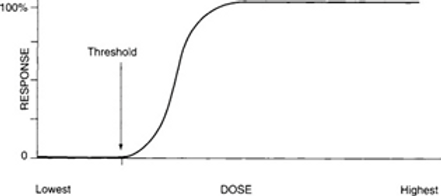If you’ve been wondering how to do an elimination diet or how to find out if food is a trigger for your HS, here is some helpful information on options.
KEEP A FOOD JOURNAL
- Record everything you eat and how much (portion sizes).
- Record your symptoms. You may have a reaction within minutes, or not until days, after eating a food.
- Remember to record all food, medications, and supplements – even ones you take occasionally.
Keeping a record of what you eat will help pinpoint what foods, and how much of them, could be causing issues in your body. It’s important to write down the portion sizes of what you eat because you may discover that ½ cup of broccoli, for example is fine, but 1 cup of broccoli causes gas and discomfort. It is not necessarily the food, but rather the amount of that food that can be the issue.
The food journal will help you identify the threshold for symptoms. As the dose (amount of food) increases, the effect (adverse symptom) may be more pronounced.

Here is an example of a food-symptom journal.

TALK ABOUT NIGHTSHADES
Nightshades include potatoes, tomatoes, eggplant, and peppers (and spices made from peppers like paprika, cayenne pepper, chili powder, etc.). They are thought to increase intestinal permeability via components like glycoalkaloid poison (solanine), alpha tomatine, and capsaicin. The most common component, solanine, is found in different amounts in the nightshade foods which explains why one nightshade may not cause a problem, but eating a nightshade with more solanine, or eating a lot of foods with solanine, might cause adverse symptoms in some people.
For example, some people have a problem with caffeine, but not coffee, so they are okay if they drink decaffeinated coffee. You can think of the solanine content of the potato in the same way. You may not have a problem with the potato, but have a problem with the chemical inside of the potato (solanine). Unfortunately you cannot take the solanine out of the potato like you can take the caffeine out of coffee, so in that case we have to throw the baby out with the bathwater.
Peeling a potato gets rid of about 60% of the solanine, which may eliminate symptoms for some people, depending on how sensitive they are to the solanine. In that case they may be able to have potatoes, just infrequently and without peels. For others, they may tolerate less solanine and potatoes may be an off limit food.
Food sensitivities can play a role in health conditions. Since about 70-80% of your immune system is in your gut, it can react to foods, additives, or other substances in our diet.
WOAH, INFORMATION OVERLOAD…THERE’S HELP AVAILABLE
If you’re interested in learning more about what could be a trigger for your personal case, but don’t have time to eliminate foods one by one, the LEAP (Lifestyle, Eating, and Performance) Program for Hidradenitis Suppurativa may be a good option!
What is LEAP?
This nutrition coaching program is done over Go To Meeting so location is not an issue! The lab test kit (Mediator Release Test ‘MRT’) is mailed to you so you can get your blood drawn at a local lab and then send the completed test kit to the lab with the included shipping materials.
The LEAP Program is an anti-inflammatory eating protocol based on a food sensitivity test called ‘MRT’ or Mediator Release Test. This test tells you how strongly your immune cells react to foods and food chemicals. The test results will tell you which foods are “safe” to eat. These are the foods you will eat for about 4 weeks to give your immune system time to calm down. The goal is to reduce inflammation in your body.
You can only eat MRT-tested, safe foods and ingredients for a period of time. If a food or ingredient isn’t listed in your plan, don’t eat it. Most people see 50-80% improvement in 10 days. After you start feeling better, you will add in one new food a day and watch for symptoms. This is why during the program, you will have to track your food and symptoms in a food-symptom journal.
How does the LEAP process work?
- 1st appointment (about 1.5 hours):
- Review your MRT results
- Build your nutrition plan together
- 2nd appointment (about 30 minutes) between day 10 and 14:
- Review your food-symptom journal and symptom survey
- Discuss adding in more tested foods
- 3rd appointment (about 30 minutes) after 30 days:
- Review your food-symptom journal and symptom survey
- If things are going well, start adding in untested foods
- 4th appointment (about 30 minutes) at 45 or 60 days:
- Review your food-symptom journal and symptom survey
- Decide if you have graduated from the program or if additional follow-up appointments are needed
Are you ready to LEAP?
- Can you cook meals at home made from whole foods?
- Can you track everything you eat and any symptoms in a journal every day?
- Can you plan out all of your meals/snacks using a menu planner? We can get you started with some recipe ideas and our Pinterest page.
If you think you’re ready based on the questions above, please reach out to Jillian Ondreyka, Registered Dietitian Nutritionist and Certified LEAP Therapist to set up an appointment and get started!
More about Nightshades and Diet here.
The Best and Worst Fad Diets for HS here.
More information about HS and Diet can be found here.
Intermittent Fasting article can be found here.
Content in this article is not intended to be a substitute for professional medical advice, diagnosis, or treatment. Always seek the advice of your physician or other qualified health provider with any questions you may have regarding a medical condition. Never disregard professional medical advice or delay seeking treatment because of something you have read on this website.
